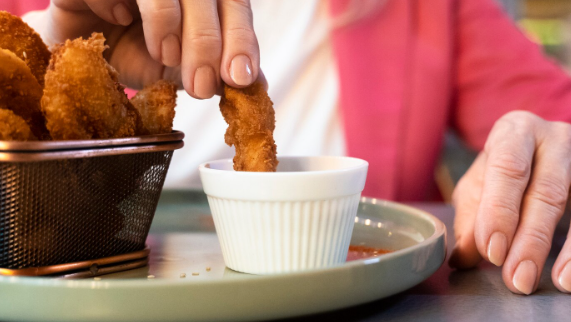If your child’s diet is a beige-coloured landscape of chicken nuggets, buttered pasta, and toast, you are not alone. The phrase “my child is a picky eater” is a universal sigh of relief and exhaustion for parents everywhere. The dinner table, which should be a place of connection, can quickly become a battlefield of negotiated bites and uneaten vegetables.
But what if we could shift the narrative? Moving beyond the nugget isn’t about winning a power struggle or forcing broccoli down a resistant throat. It’s about fostering a positive, low-pressure relationship with food that will serve your child for a lifetime. Let’s explore how.
First, Take a Deep Breath: Why Kids Become Picky Eaters
Before we dive into solutions, it’s crucial to understand that some pickiness is completely normal. It’s not a reflection of your cooking or your parenting skills.
• Biology: From an evolutionary standpoint, being wary of new, potentially bitter foods (like many vegetables) was a safety mechanism for toddlers.
• Developmental Need for Control: Saying ‘no’ is one of the first ways a young child can exert their independence. ‘No, I won’t eat that’ is a powerful statement for a little person.
• Changing Taste Buds & Appetites: A toddler’s growth slows down after infancy, so their appetite naturally decreases. What was a favourite food yesterday might be repulsive today, and that’s okay.
Understanding this helps us approach the problem with empathy instead of frustration. Our goal isn’t to control, but to guide.
The Golden Rule: Drop the Power Struggle
When mealtime becomes a fight, everyone loses. Your stress levels rise, and your child digs their heels in deeper. The single most important shift you can make is to adopt the Division of Responsibility in Feeding, a model by feeding expert Ellyn Satter.
• The Parent’s Job: To decide what, when, and where food is offered.
• The Child’s Job: To decide whether and how much to eat from what the parent provides.
This means you provide balanced, nutritious options at structured meal and snack times. Your child then has the autonomy to choose what and how much to eat from their plate. This takes the pressure off everyone and puts you on the same team.
Practical Strategies to Win the War (Without a Single Battle)
1. Become a Food Explorer, Not a Food Enforcer
Change the language around new foods. Instead of ‘You have to take one bite,’ try:
• ‘Let’s describe this red pepper. Is it crunchy or soft?’
• ‘This dip is the broccoli’s superhero cape! Let’s see if it can fly into your mouth.’
The goal shifts from consumption to simple, pressure-free interaction.
2. The Power of “Food Chaining”: The Sneaky Bridge
Food chaining is a brilliant method of making tiny, incremental changes from an accepted food to a new one.
• Start with: Chicken nuggets (breaded, uniform shape).
• Next step: Homemade baked chicken nuggets (same shape, slightly different taste/texture).
• Then: Baked chicken strips (same taste, different shape).
• Then: Grilled chicken slices (different texture, same food).
3. Deconstruct Your Meals
Picky eaters are often ‘component eaters’ who dislike when foods touch. Embrace it! Serve a ‘build-your-own’ taco bar, pasta bar, or salad bar.
• Protein (black beans, grilled chicken, grated cheese)
• Veggies (diced tomatoes, shredded lettuce, corn)
• Carbs (taco shells, tortilla chips, pasta)
4. Involve Them in the Process
We are far more invested in things we help create. Involve your child in:
• Meal Planning
• Groceries
• Cooking
5. Make Food Fun (Not Gimmicky)
You don’t need to create intricate food art every day. Simple presentations can make a big difference.
• Use cookie cutters to create fun shapes.
• Serve food with a ‘dip sidekick’.
• Give foods fun names like ‘Power-Up Broccoli Trees.’
6. Patience and Repetition are Your Best Friends
It can take 10–20 exposures to a new food before a child feels comfortable trying it. Continue to offer a small portion of the rejected food alongside accepted ones.
What to Do When It’s More Than Just Pickiness
While most picky eating is a phase, it’s important to recognize the signs that it might be something more, like ARFID or sensory issues. Consider consulting a paediatrician or feeding therapist if your child:
• Has an extremely limited diet (fewer than 20 foods)
• Entirely avoids food groups
• Has significant difficulty chewing or swallowing
• Experiences dramatic weight loss
• Gets genuinely distressed when presented with new foods.
The Final Bite: You’ve Got This
Moving beyond chicken nuggets is a marathon, not a sprint. Celebrate small wins—the lick of a new sauce, the touch of a green bean, or just a new food on the plate.
Your job isn’t to force-feed a perfectly balanced meal today. It’s to plant the seeds of curiosity and a positive relationship with food that will blossom for years to come. Keep offering, keep exploring, and trust that patience and creativity will raise an adventurous eater, one tiny, brave bite at a time.










